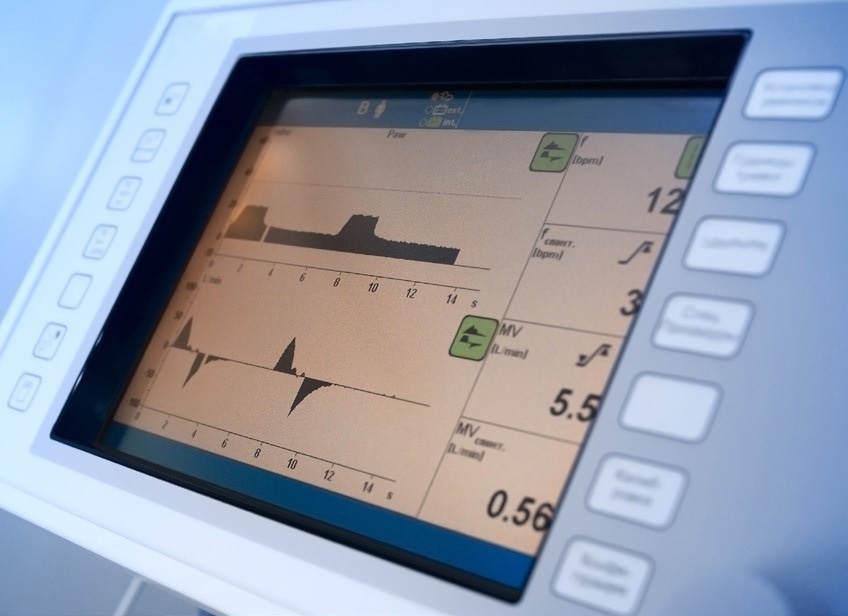For many applications, there are several reasons why utilizing a mass air flow sensor is critical or of benefit. It is often required to record mass flow rates separately to volumetric flow, which is a capability of mass air flow sensors.
This can be observed in multiple automotive applications, where calculating the best air/fuel ratio needs the mass of the gas irrespective of its environment, not only its volume.1 Although, there are also different approaches for alternative devices, for example manifold pressure sensors or speed density measurements for engines.
For applications where volumes and temperatures are expected to maintain consistency, a flow meter may be a beneficial proxy for mass flow rates. This article will discuss some of the main benefits and weaknesses of the use of mass air flow sensors for various applications.

 Download the Full eBook Here
Download the Full eBook Here
Pros
A Large Number of Design Options
Mass air flow sensors are available in a variety of sensor types and designs. Hot-film or hot-wire sensors are the most popular, and it is possible to include extra characteristics for example silicon layers or membranes 2 to create true mass flow readings that are able to cope with turbulent conditions and backflow.
For example, micromachined mass air flow sensors, also known as MEMS sensors, are commonly used in medical applications, where their compact, small, and chip-based design makes them simple to integrate into devices for artificial ventilation.3,4

Utilizing further electronics, it is also comparably simple to build in amplifiers to maximize the signal levels from the sensors where only slight variations in mass flow rate are expected.
Along with there being several types of mass airflow sensor, it is also a possibility to tailor their performance characteristics by tuning parameters, for example the outlets on the housing and the gas intake.
Various housing designs can also be employed to decrease turbulence in the air intake, which can enhance performance. Furthermore, inlet sizes can be made greater so that the mass air flow sensor does not limit the intake of air.
Robust Measurements
As mentioned before, a flowmeter could possibly be considered as an alternative to a mass air flow sensor in particular environments. Although, given the volume dependence on temperature and the compressibility of gases, flow meter readings are highly sensitive to changes in environmental conditions.5
The option to adjust mass air flow sensors to perform under backflow and make true mass air flow readings makes measurements much more hardy for applications such as automotive analysis and gas chromatography inlets, where the chemical composition of the gas is essential.
Low Cost
In mass air flow sensors, the lack of moving parts makes them more dependable and simpler to maintain and, for thermal mass air flow sensors especiallyespecially ,makes them relatively low cost. MEMS-based sensors commonly have very low draws of power, which decreases the related costs of running the sensor.
These devices are easy to produce in the masses, which helps to keep manufacturing costs low, making mass air flow sensors an inexpensive solution for mass air flow measurements.
Cons
Easily Contaminated – Leading to Sensor Malfunctioning and Failure
The introduction of self-cleaning hot-film and hot-wire sensors has decreased the issues related to sensor contamination but has not totally eliminated them. A high current is utilized to enhance the temperature of the wire and ‘burn off’ any debris to self-clean the wires.

Badly performing mass air flow sensors as a result of contamination are one of the most frequent sources of engine issues. While relatively simple to correct, any tiny amount of trace material that adjusts the resistivity of the wires can lead to inaccurate results in the sensor measurements.
Cleaning also increases the risk of breaking the fragile wires in hot-wire type sensors or harming the surface of the film, which would both render the sensor useless.
Thermal Mass Air Flow Sensors Require Calibration
To analyze the mass flow, thermal sensors are reliant upon temperature changes between the metal surface vulnerable to the airflow and a shielded reference wire. As various gases have alternate thermal characteristics, the heat loss and increase of current in the exposed wire will be changeable dependant on the composition of the gas.
As this current change must be calibrated against a mass flow rate for the sensor to perform and carry out the conversion correctly, this means that calibration is only beneficial for one kind of gas.
Reduced Air Intake and Performance
Although mass air flow sensors can be produced with an inlet to decrease the restriction of air entering the sensor and ultimately the device, even the most recent hot-wire devices do impact air intake slightly.
This is more challenging in older sensor designs where the air flow restrictions were increased, and the sensors were incapable of coping with backflow issues. These problems frequently resulted in fueling problems while accelerating and starting the engine, where the air intake was at its most turbulent and, as a consequence, fuel mixtures that were too rich were being used.

 Download the Full eBook Here
Download the Full eBook Here
References and Further Reading
- Fleming, W. J. (2008). New Automotive Sensors - A Review. IEEE Sensors Journal, 8(11), 1900–1921.
- Hourdakis, E., Sarafis, P., & Nassiopoulou, A. G. (2012). Novel air flow meter for an automobile engine using a Si sensor with porous Si thermal isolation. Sensors (Switzerland), 12(11), 14838– 14850. https://doi.org/10.3390/s121114838
- Jewitt, H., & Thomas, G. (2012). Measurement of flow and volume of gases. Anaesthesia and Intensive Care Medicine, 13(3), 106–110. https://doi.org/10.1016/j.mpaic.2011.12.013
- Nguyen, N. T. (1997). Micromachined flow sensors - A review. Flow Measurement and Instrumentation, 8(1), 7–16. https://doi.org/10.1016/S0955-5986(97)00019-8
Disclaimer: The views expressed here are those of the author expressed in their private capacity and do not necessarily represent the views of AZoM.com Limited T/A AZoNetwork the owner and operator of this website. This disclaimer forms part of the Terms and conditions of use of this website.